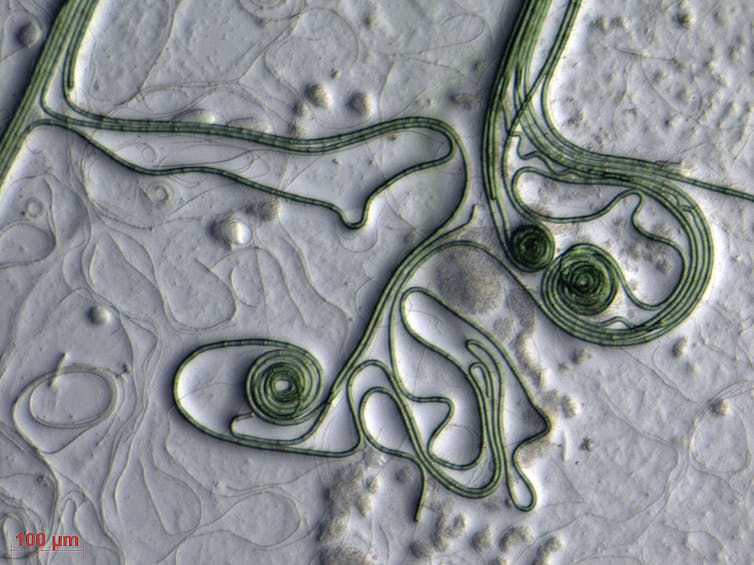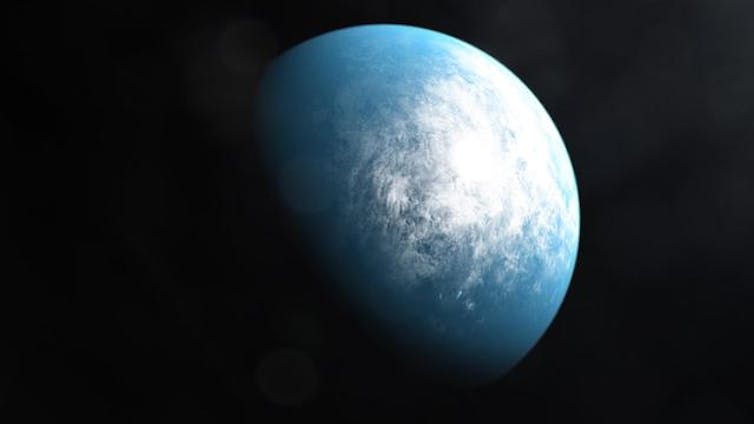Lead image by Shutterstock
By Peter Crockford
This article is republished from The Conversation under a Creative Commons licence. All photos provided by The Conversation from various sources.
Peter Crockford is an assistant professor in earth sciences at Carleton University.
All organisms are made of living cells. While it is difficult to pinpoint exactly when the first cells came to exist, geologists’ best estimates suggest at least as early as 3.8 billion years ago. But how much life has inhabited this planet since the first cell on Earth? And how much life will ever exist on Earth?
In our new study, published in Current Biology, my colleagues from the Weizmann Institute of Science and Smith College and I took aim at these big questions.
Carbon on Earth
Every year, about 200 billion tons of carbon is taken up through what is known as primary production. During primary production, inorganic carbon — such as carbon dioxide in the atmosphere and bicarbonate in the ocean — is used for energy and to build the organic molecules life needs.
Today, the most notable contributor to this effort is oxygenic photosynthesis, where sunlight and water are key ingredients. However, deciphering past rates of primary production has been a challenging task. In lieu of a time machine, scientists like myself rely on clues left in ancient sedimentary rocks to reconstruct past environments.
In the case of primary production, the isotopic composition of oxygen in the form of sulfate in ancient salt deposits allows for such estimates to be made.
In our study, we compiled all previous estimates of ancient primary production derived through the method above, as well as many others. The outcome of this productivity census was that we were able to estimate that 100 quintillion (or 100 billion billion) tons of carbon has been through primary production since the origin of life.
Big numbers like this are difficult to picture; 100 quintillion tons of carbon is about 100 times the amount of carbon contained within the Earth, a pretty impressive feat for Earth’s primary producers.
Primary production
Today, primary production is mainly achieved by plants on land and marine micro-organisms such as algae and cyanobacteria. In the past, the proportion of these major contributors was very different; in the case of Earth’s earliest history, primary production was mainly conducted by an entirely different group of organisms that don’t rely on oxygenic photosynthesis to stay alive.
A combination of different techniques has been able to give a sense of when different primary producers were most active in Earth’s past. Examples of such techniques include identifying the oldest forests or using molecular fossils called biomarkers.
In our study, we used this information to explore what organisms have contributed the most to Earth’s historical primary production. We found that despite being late on the scene, land plants have likely contributed the most. However, it is also very plausible that cyanobacteria contributed the most.

(Argonne National Laboratory), CC BY-NC-SA
Total life
By determining how much primary production has ever occurred, and by identifying what organisms have been responsible for it, we were also able to estimate how much life has ever been on Earth.
Today, one may be able to approximate how many humans exist based on how much food is consumed. Similarly, we were able to calibrate a ratio of primary production to how many cells exist in the modern environment.
Despite the large variability in the number of cells per organism and the sizes of different cells, such complications become secondary since single-celled microbes dominate global cell populations. In the end, we were able to estimate that about 1030 (10 noninillion) cells exist today, and that between 1039 (a duodecillion) and 1040 cells have ever existed on Earth.
How much life will Earth ever have?
Save for the ability to move Earth into the orbit of a younger star, the lifetime of Earth’s biosphere is limited. This morbid fact is a consequence of our stars life cycle. Since its birth, the sun has slowly been getting brighter over the past four and half billion years as hydrogen has been converted to helium in its core.
Far in the future, about two billion years from now, all of the biogeochemical fail-safes that keep Earth habitable will be pushed past their limits. First, land plants will die off, and then eventually the oceans will boil, and the Earth will return to a largely lifeless rocky planet as it was in its infancy.
But until then, how much life will Earth house over its entire habitable lifetime? Projecting our current levels of primary productivity forward, we estimated that about 1040 cells will ever occupy the Earth.

(NASA Goddard Space Flight Center)
Earth as an exoplanet
Only a few decades ago, exoplanets (planets orbiting other stars) were just a hypothesis. Now we are able to not only detect them, but describe many aspects of thousands of far off worlds around distant stars.
But how does Earth compare to these bodies? In our new study, we have taken a birds eye view of life on Earth and have put forward Earth as a benchmark to compare other planets.
What I find truly interesting, however, is what could have happened in Earth’s past to produce a radically different trajectory and therefore a radically different amount of life that has been able to call Earth home. For example, what if oxygenic photosynthesis never took hold, or what if endosymbiosis never happened?
Answers to such questions are what will drive my laboratory at Carleton University over the coming years.
![]()
Thursday, January 11, 2024 in The Conversation
Share: Twitter, Facebook



